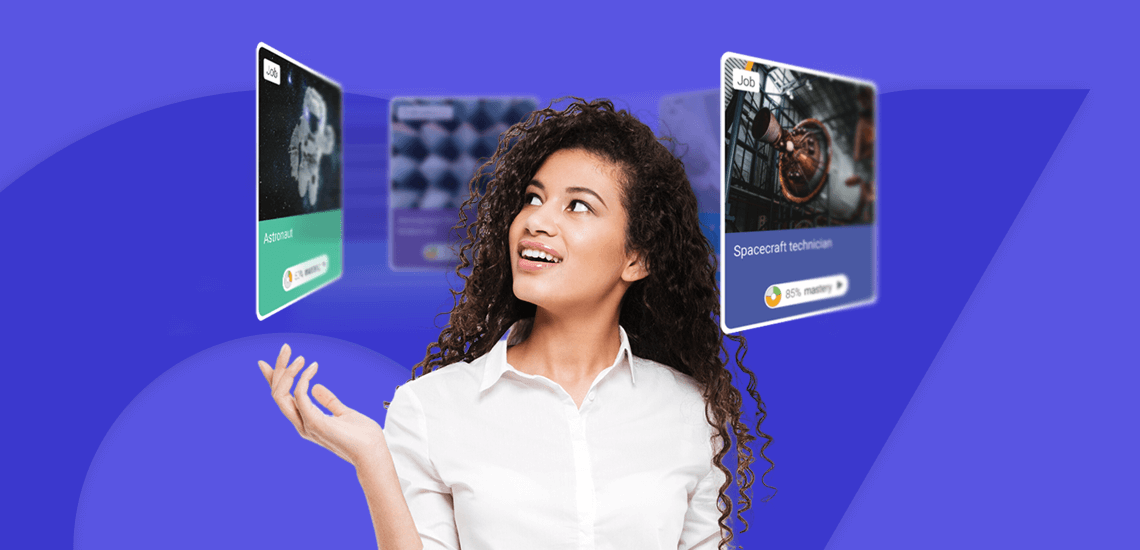In the era of continuous disruption, it makes perfect sense that individuals take ownership of their own careers. It's important to be self-aware, figure out your goals, and work towards them efficiently. With so many possible avenues, staying focused and keeping an eye out for opportunities is a rather tall order.
Job security is no longer necessary, as it has been replaced with the agility needed to be relevant and useful regardless of how markets change. The fluidity of job roles adds to the challenge, and organizations need to be ready to address all of these by offering employees the resources they need.
The well-planned career blueprints that used to be the norm are now obsolete, replaced by much more dynamic alternatives.
Read more: 3 Considerations of modern career development
Challenging job boundaries
Millennials make up the majority of the workforce, and Gen Zs are now also making their way into the corporate world. These younger employees have a certain restlessness in common, which has been the raw material for a lot of generational humor. However, it is nonetheless representative and relevant.
And while they don't have the patience to spend years struggling to climb the proverbial corporate ladder, job promotions are not that frequent due to constant changes in the corporate scenery.
The time of overspecialized roles has passed. Companies that want to stay relevant and have an agile workforce need to understand this.
Strict job requirements are detrimental to employee development, so the boundaries have to be blurred. For workers to go from a "not my job" to a "now my job" attitude, they need a space that allows them to grow.
Investing in L&D
Today's dynamic business environment requires constant transformation. In turn, change requires continuous learning. While there is no shortage of available online material and educational opportunities, they are also difficult to curate.
People don't have the time (nor the skills) to sift through heaps of content and figure out what is useful and what's a waste of energy. Therefore, organizations need to invest in modern learning management systems and have dedicated teams ready to create and curate content.
The support function of the L&D department is essential in any transformational process. For the learning specialists to offer employees the right materials and tools, they need to get theirs first.
Read more: What L&D professionals need to know about curating learning content
Rethinking career development
Traditionally, career development was mainly a transaction between the employee and the manager. This included regular meetings, discussion of goals and KPIs, as well as action plans for defined periods of time. The relationship between team members and team leaders remains essential, and managers have to put in the time and effort to know and support employees.
Yet, career development should become a crowdsourcing endeavor rather than remain in the province of one-to-one, formal meetings. Supporting individuals to reach their potential and move in the direction that is best for them should be a group effort that involves peers, L&D specialists, and HR consultants. Especially at a time when we're unsure what tomorrow's job requirements will be, it's important to have various perspectives and different people in your corner.
Read more: How HR and L&D departments can stay on top of career mobility
Normalizing informal learning
This comes as a natural continuation of crowdsourcing career development. It's no secret that people learn constantly, and the learning sources are as varied as they are scattered across various online and offline environments.
Informal learning is not about disregarding the organizational L&D structure and resources but about democratizing user access to it and allowing employees to choose what, how, and when they learn. It also means accepting several external resources (like our old pals Google and YouTube) as reliable and useful.
Instead of insisting that people follow a certain learning path to a T and go through all the modules in order, you can create needs assessments and have personalized plans for each individual based on the results. It shouldn't matter where someone got the information if it's correct and helps them be better at their job.
However, this also means that L&D programs should not be evaluated by the number of users who complete them or by the hours spent online. Instead, evaluate what learners know and can do at the end.
Read more: 8 Best practices to facilitate informal learning
Closing thoughts
Organizations have a full plate right now, trying to stay on top of markets in very challenging times. However, they need to look into the future and start planning for it. This entails a change of optics when it comes to career development. The sooner the transformation process starts, the better the results will be.







